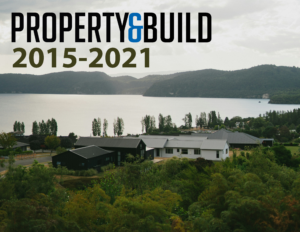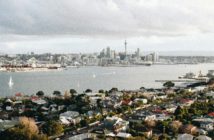CoreLogic data showed nationwide values increased by just 1.6% over August, well below the recent monthly peak of 3.1% in April, but will Covid’s resurgence push values up once again?

As the market continues to transition towards a more sustainable rate of growth, the natural turn of focus is towards the outlook and the impact of COVID-related lockdowns. In the short-term, CoreLogic cautions the number of property listings will be impacted which could flow through to increased values.
“Through lockdowns it is harder for agents to source leads and for vendors to prepare their property for sale,” explains CoreLogic NZ Head of Research Nick Goodall.
“Tracking of early market indicators, like appraisals generated by agents using Property Guru and RPNZ, shows real estate agent activity has dropped by -52% compared to the week before lockdown.
“This further tightening of supply could lead to some temporary renewed upwards price pressure as pent up demand competes for limited listings.”
Century 21 New Zealand Owner Tim Kearins says his agency is looking forward to safely turning a lot of enquiries during Level 4 into some measured action.
“With most of the country set to go into Level 3, our agents south of the Bombay Hills are anticipating they’ll see quite a bit of pent up demand.
“New Zealand’s real estate sector has operated safely and effectively in Level 3 before. For at least most of the country, we’re looking forward to doing so again,” he says.
Level 3 means auctions can take place online or via phone bidding. Property viewings can happen by private appointment and with restrictions, as can pre-settlement inspections, settlements and moving house.
Discussions with agents on agreements, marketing and the listing process must occur via teleconference or over the phone, not in person. Property appraisals by agents, however, can happen with strict protocols in place but ideally should be carried out remotely.
Mask wearing, social distancing, strict hygiene practices and contact tracing requirements will also firmly feature.
Kearins says Century 21’s website and listings have enjoyed some great traffic during the nationwide Level 4 lockdown over the past fortnight.
“Our agents have been fielding plenty of enquiries about listings and giving virtual appraisals via video calls. However, Level 3 will be when many buyers feel more comfortable to make decisions.
“Although it will take an appointment, with strict protocols in place, buyers will at least be able to view properties in person. That will make a real difference to seeing more transactions inked,” he says.
However, Goodall says any reacceleration of house price growth rates, if it eventuates, is likely to be short lived.
“Apart from the prospect of rising mortgage rates and the impact of tighter credit policies, it’s important to factor in the weight of worsening housing affordability.
“However, as property values rise faster than incomes, the cost of purchasing a home will simply become out of reach for a growing number of would-be buyers, especially as increasing interest rates start to impact the amount of money people can borrow.
“With property difficult to transact under alert level four restrictions it’s too soon to note any immediate impact on prices from the lockdown to date, however we do have the last lockdown (April 2020) and subsequent price boom to compare to.
“The factors leading to that boom were many, and they’re not all present this time around. While the reaction from the Government has so far been supportive, it is unlikely to be stimulatory.”
Goodall says initial support has come quickly via the re-introduction of the wage subsidy scheme and resurgence of support payments for other business costs, but this leaves a range of other measures so far out of the toolkit, which not only protected the property market from a downturn in prices, but also helped stimulate the market last year.
“Many of these related to mortgage lending with the official cash rate (OCR) being cut from 1% to 0.25%, alongside quantitative easing (Government bond buying) from the Reserve Bank which reduced mortgage interest rates and ensured liquidity.
“The Reserve Bank also temporarily removed the loan-to-value ratio (LVR) restrictions, partly to assist the distressed mortgage deferral programme introduced by each of the banks.
“In absence of these additional stimulatory measures we do not expect any Covid-induced surge in prices to linger.
“In fact the current LVR settings are tighter than prior to the initial lockdown (40% deposit requirement for investors) and the Reserve Bank has been very clear that the next move for the OCR is up. In a recent release they went as far as saying that had we not been plunged into the snap lockdown on the day of their last monetary policy review, then they would have lifted the OCR.
“Guidance then, for their next decision on October 6 is almost certainly an OCR increase of at least 25 basis points, even if parts of the country remain at alert level three or four. This will maintain a degree of upwards pressure on mortgage rates which historically have worked as a headwind against value growth.”
Areas that have gone through considerable periods of strong growth may be the first to see that lack of affordability start to pinch. Some of this can be seen in the geographically granular house price index data.
“Rotorua in particular has seen a noticeable shift in momentum, with the quarterly rate of change dropping into the negatives (-2.8%) for the first time in over two years. This is especially of interest following a quarterly growth rate as high as 9.7% only a few months ago, at the end of May 2021,” says Goodall.
The average value in Rotorua has dropped back below $650,000, but this is well over twice (135% increase) the average value only six years ago ($273,754). Over the same period the house price to income ratio has increased from 3.6 to 6.5 – a clear illustration of the struggles many buyers will find, trying to get into the market.
Elsewhere, Queenstown saw a sharp reduction in the quarterly rate of growth between July (7.1%) and August (3.4%), as did Whanganui (8.3% to 4.4%) while Gisborne’s quarterly rate of growth dropped below 2% for the first time in a year (1.4%) – yet more evidence of a stalling in momentum after values increased over 38% in the last year (highest annual rate on record).
In the main centres Auckland was the only city to see the quarterly rate of growth lift over the month, to 5.7% (from 5.0% at the end of July). Recent value increases have been relatively even across the city with Franklin (7.0%) and North Shore (4.3%) the outliers at either end of the spectrum.
Hamilton meanwhile saw a sharp drop in the quarterly rate, falling into the negatives (-0.5%) for the first time in over two years (-0.1% in July 2019). Affordability is once again a factor, with the average property value almost 8 times the average income and the time to save a deposit now exceeding 10 years showing just how hard it is for new entrants to the market.
Despite signs of change in Dunedin (slowing sales volumes, increasing listings) quarterly growth is still solid at 4.0%, while the other main centres are also slowing but retain relatively high rates of growth (between 5.4% and 6.7%).
Highlights from the CoreLogic HPI for August 2021:
National and Main Centres
| Change in property values | Average Value | ||||||
| Month | Quarter | Annual | |||||
| New Zealand | 1.6% | 5.2% | 27.0% | $922,421 | |||
| Auckland | 2.1% | 5.7% | 24.7% | $1,337,648 | |||
| Hamilton | -2.8% | -0.5% | 21.8% | $782,774 | |||
| Tauranga | 2.6% | 5.4% | 28.0% | $1,021,021 | |||
| Wellington | 2.4% | 6.3% | 35.0% | $1,065,224 | |||
| Christchurch | 1.5% | 6.7% | 26.0% | $654,198 | |||
| Dunedin | 1.1% | 4.0% | 23.2% | $672,058 | |||
Provincial Centres (ordered by annual growth rate)
| Change in property values | Average Value | |||
| TA | Month | Quarter | Annual | |
| Rotorua | -0.9% | -2.8% | 19.9% | $644,390 |
| Nelson | 1.9% | 6.0% | 21.8% | $804,681 |
| Invercargill | 1.0% | 3.4% | 21.8% | $441,837 |
| Queenstown | 0.4% | 3.4% | 23.3% | $1,391,079 |
| Whangarei | -0.2% | 1.9% | 26.2% | $731,063 |
| New Plymouth | 2.2% | 3.5% | 27.4% | $655,515 |
| Napier | 1.4% | 3.9% | 34.1% | $827,381 |
| Lower Hutt | 1.9% | 5.5% | 36.4% | $939,981 |
| Kapiti Coast | 1.0% | 2.0% | 36.8% | $919,741 |
| Upper Hutt | 2.3% | 5.7% | 37.0% | $892,375 |
| Hastings | 2.1% | 6.5% | 37.2% | $814,682 |
| Porirua | 2.3% | 6.4% | 37.8% | $953,891 |
| Gisborne | 1.3% | 1.4% | 38.2% | $599,244 |
| Palmerston North | 1.6% | 5.9% | 39.1% | $725,185 |
| Whanganui | 0.3% | 4.4% | 41.4% | $522,220 |







